Nov 1, 2018 | Non categorizzato
The saints are great men and women who, having seen their greatness in the Lord, risk for God, as his children, everything that is theirs. They give, demanding nothing. They give their life, their soul, their joy, every earthly bond, every richness. Free and alone, launched into infinity, they wait for Love to bring them into the eternal kingdom; but, already in this life, they feel their hearts fill with love, true love, the only love that satisfies, that consoles, that love which shatters the eyelids of the soul and gives new tears. Ah, no one knows who a saint is! He or she has given and now receives, and an endless flow passes between heaven and earth, joins earth to heaven, and filters from the depths rare ecstasy, celestial sap that does not stop at the saint, but flows over the tired, the mortal, the blind and paralyzed in soul, and breaks through and refreshes, comforts and attracts and saves. If you want to know about love, ask a saint. Chiara Lubich, Essential Writings, New City Press, Hyde Park, NY, 2007, p. 116
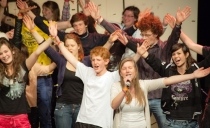
Oct 31, 2018 | Non categorizzato
 Maria Voce Emmaus and Jesús Morán respectively President and Co-President of the Focolare Movement will travel to Belgium for the 60th anniversary of the arrival of the Focolare in that country. Official Focolare website https://www.focolare.org/belgium/news/60-ans-du-mouvement-des-focolari-en-belgique/
Maria Voce Emmaus and Jesús Morán respectively President and Co-President of the Focolare Movement will travel to Belgium for the 60th anniversary of the arrival of the Focolare in that country. Official Focolare website https://www.focolare.org/belgium/news/60-ans-du-mouvement-des-focolari-en-belgique/
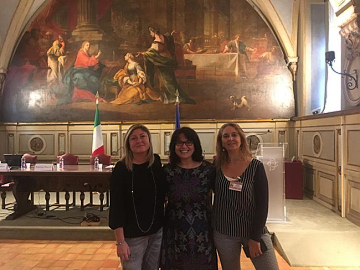
Oct 31, 2018 | Non categorizzato
 It’s called “TST” (tempi senza tensioni, “Time Without Tensions”), a program aimed at balancing work and family life. It was produced by the Il Sentiero di Arianna social cooperative (“Arianna’s way”), which is part of the Economy of Communion, and received first prize in the fourth edition of Family Friendly Businesses that is put on by a forum of family associations in Lazio, Italy. The cooperative, which is part of the Consorzio Tassano Servizi Territoriali network, primarily works in the field of home assistance, education, school services and career support. The TST program produces a series of specific services for employees (dispute resolution, family help, counseling services, working remotely, telecommuting, flexible banking hours, informative actions for management, being a Jack of all trades, and pathways that help employees returning to work after a period of reconciliation). These have shown themselves to be highly effective in creating a positive workplace culture that is based on authentic relationships of collaboration and cooperation. Started in 1996 by nine young women, who for a year pooled the resources that they had earned and reinvested them in training and development, today Il Sentiero di Arianna counts more than 130 members, 85% of whom are women. The tightly knit initial group and the pioneers of the local coop, inspired by the values of the Economy of Communion project that Chiara Lubich launched in 1991, became the foundations upon which the business was developed.
It’s called “TST” (tempi senza tensioni, “Time Without Tensions”), a program aimed at balancing work and family life. It was produced by the Il Sentiero di Arianna social cooperative (“Arianna’s way”), which is part of the Economy of Communion, and received first prize in the fourth edition of Family Friendly Businesses that is put on by a forum of family associations in Lazio, Italy. The cooperative, which is part of the Consorzio Tassano Servizi Territoriali network, primarily works in the field of home assistance, education, school services and career support. The TST program produces a series of specific services for employees (dispute resolution, family help, counseling services, working remotely, telecommuting, flexible banking hours, informative actions for management, being a Jack of all trades, and pathways that help employees returning to work after a period of reconciliation). These have shown themselves to be highly effective in creating a positive workplace culture that is based on authentic relationships of collaboration and cooperation. Started in 1996 by nine young women, who for a year pooled the resources that they had earned and reinvested them in training and development, today Il Sentiero di Arianna counts more than 130 members, 85% of whom are women. The tightly knit initial group and the pioneers of the local coop, inspired by the values of the Economy of Communion project that Chiara Lubich launched in 1991, became the foundations upon which the business was developed.  Since its constitution, the Sentiero di Arianna cooperative has promoted a family friendly business culture, which in turn positively influenced other businesses it is connected to. It is an organization where the news of a pregnancy is always good news, where someone can become a mother and return to work without worry. Yet it is also a company where the women who are not mothers are the innovators, knowing how to fuse positive organizational improvement processes that harmonize work with caring for those closest to them. The needs of people and families are many. “If you go back to the origins of the word ‘economy,’ you find the word ‘house’. Those of us in business cannot feel separate from everyone else. You cannot be a worker and then, when you go home, be a parent. Each person is unique, and as such they have their work experience,” said the firm’s president, Simona Rizzi, as she received the prize on October 9 in the Chamber of Deputies in Rome. Among other things, the prize states: “This is an entity endowed with a vision that is particularly attentive to people. Starting with the needs of its employees, they developed an innovative organizational flexibility that set up tangible support both internally and throughout its territory, weaving a network of social and economic relationships to find appropriate solutions that meet the need of harmonizing work and family life.” “This award is the result of a long journey the cooperative has been on since its origins up to today. It is a journey that has developed through many important experiences these past years,” Rizzi added. “It is the women themselves who have won, with their ability to build a business that is fit for people and to build an economy that is fit for a community.” “Businesses that adopt best practices of reconciliation also demonstrate increases in productivity among other things. The women who work there reach management and high-profile leadership positions sooner,” was a comment from the Minister for Family and Disability, who was interviewed at the awards. Source: www.edc-online.org
Since its constitution, the Sentiero di Arianna cooperative has promoted a family friendly business culture, which in turn positively influenced other businesses it is connected to. It is an organization where the news of a pregnancy is always good news, where someone can become a mother and return to work without worry. Yet it is also a company where the women who are not mothers are the innovators, knowing how to fuse positive organizational improvement processes that harmonize work with caring for those closest to them. The needs of people and families are many. “If you go back to the origins of the word ‘economy,’ you find the word ‘house’. Those of us in business cannot feel separate from everyone else. You cannot be a worker and then, when you go home, be a parent. Each person is unique, and as such they have their work experience,” said the firm’s president, Simona Rizzi, as she received the prize on October 9 in the Chamber of Deputies in Rome. Among other things, the prize states: “This is an entity endowed with a vision that is particularly attentive to people. Starting with the needs of its employees, they developed an innovative organizational flexibility that set up tangible support both internally and throughout its territory, weaving a network of social and economic relationships to find appropriate solutions that meet the need of harmonizing work and family life.” “This award is the result of a long journey the cooperative has been on since its origins up to today. It is a journey that has developed through many important experiences these past years,” Rizzi added. “It is the women themselves who have won, with their ability to build a business that is fit for people and to build an economy that is fit for a community.” “Businesses that adopt best practices of reconciliation also demonstrate increases in productivity among other things. The women who work there reach management and high-profile leadership positions sooner,” was a comment from the Minister for Family and Disability, who was interviewed at the awards. Source: www.edc-online.org
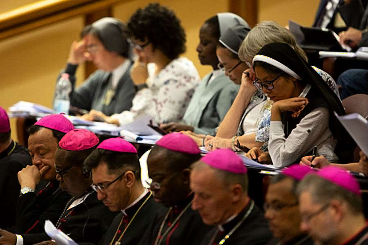
Oct 30, 2018 | Non categorizzato
 “It is often to the youngest that the Lord reveals better solutions.” These are words from Saint Benedict in his “Rule.” These were also the words chosen by Pope Francis when he announced the 15th Ordinary General Assembly of Bishops, on October 3-28 , which has just concluded. Preceded by a Preparatory Document (January 2017), a Questionnaire in several languges and by a Pre-Synodal Reunion (March 2018) with the participation of around three-hundred young people and several thousand others through social media, the Synod was the final step on a long and well organised walk. It was a walk of mutual listening, attentiveness, sharp and open dialogue ‘with’ and ‘about’ the new generations. Sixteen thousand responses arrived from Uganda alone. In line with previous Assemblies, the Synod had a common thread: renewal of the Church and society starting from their very foundations: the family and the youth who guarantee the future generations,” as Cardinal Lorenzo Baldisseri , Secretary General of the Synod of Bishops, explained during his inaugural press conference. “Youth doesn’t last a lifetime,” remarked Archbishop Rino Fisichella, president of the Pontifical Council for the Promotion of the New Evangelization. The period of youth comes to an end at a certain point. But what remains is having lived it intensely. The most important thing is to give meaning to the great gift of life that has been placed in our hands.”
“It is often to the youngest that the Lord reveals better solutions.” These are words from Saint Benedict in his “Rule.” These were also the words chosen by Pope Francis when he announced the 15th Ordinary General Assembly of Bishops, on October 3-28 , which has just concluded. Preceded by a Preparatory Document (January 2017), a Questionnaire in several languges and by a Pre-Synodal Reunion (March 2018) with the participation of around three-hundred young people and several thousand others through social media, the Synod was the final step on a long and well organised walk. It was a walk of mutual listening, attentiveness, sharp and open dialogue ‘with’ and ‘about’ the new generations. Sixteen thousand responses arrived from Uganda alone. In line with previous Assemblies, the Synod had a common thread: renewal of the Church and society starting from their very foundations: the family and the youth who guarantee the future generations,” as Cardinal Lorenzo Baldisseri , Secretary General of the Synod of Bishops, explained during his inaugural press conference. “Youth doesn’t last a lifetime,” remarked Archbishop Rino Fisichella, president of the Pontifical Council for the Promotion of the New Evangelization. The period of youth comes to an end at a certain point. But what remains is having lived it intensely. The most important thing is to give meaning to the great gift of life that has been placed in our hands.”  On Sunday, a solemn celebration and the publication of a Final Document concluded the Assembly. More than 150 bishops attended the Synod, two of whom came for the first time from continental China. There were 40 young people under the age of 30 attending as auditors. They were a significant presence, exuberant and at times noisy, always active on the digital channels with the publication of posts and selfies with the Pope and the other bishops, whom they met informally in the corridors, moments of recreation or in more official settings like the small discussion groups. They were always ready for a conversation or for offering their contribution of positive criticisms and concrete proposals. Without any fear of the high-sounding titles or silver hair, they took to heart the Pope’s invitation to: “cling to the bark of the Church which, even through impestuous storms in the world, continues to offer refuge and hospitality to all.” It’s worth the trouble, he had said, “to place ourselves in a position of listening towards each other.” “A Synod of very particular significance,” affirmed Cardinal Reinhard Marx, Archbishop of Muchen und Freising, president of the German Bishops Conference, during one of the many briefings with journalists, “a place of learning about the youth,” whom the Synod of bishops wanted to know in depth, thanks to the input of the ones they were directly interested in knowing about. The relationship between the virtual world and the real world, immigration, the role of school and universities, parish life and the formation of catechists, friendships and relationships, were just a few of the topics they dealt with. “They also talked about digital pastoral ministry, how the Church can find its place in the world of social communications,” explained Paolo Ruffini, Prefect of the Dicastery for Communication. “We have the same problems,” insisted Bishop Andrew Nkea Fuanya, Bishop of Mamfe, Cameroon, “but we face them from different points of view.” The churches in Cameroon are filled to the brim, but the youth are unhappy because of the many problems that spread across Africa. How are we to help them? We’re all in search of the same solution.” “A Synod on the youth with the youth,’ said Tadeusz Kondrusiewicz, Archbishop of Minsk-Mohilev and president of the Bishops Conference of Bielorussia, “which makes it particularly dynamic, because the young are never static.” “Vibrant was the surprise over the closeness of the topics that were faced, in the challenges of today’s Church even in the diversity of circumstances,” said Pastor Marco Fornerone from the Evangelical Church in Rome, who was attending as one of the 8 fraternal representatives. In the course of the Assembly, on October 6, a special meeting was held between the young people, the Pope and other bishops, against the backdrop of Paul VI Hall, titled “WE FOR – Unique, Supportive, Creative” There were three main topics: the search for identity, relationships and life as service and giving. There were also many life testimonies , studies, work and the difficulty of making decisions for the future. The program was interspersed with music and artistic pieces. In conclusion, at the end of the Synod, there was still one last gift from the Pope to the young auditors: a copy of Docat, a source of the church’s social teaching, Leo XIII’s “Rerum Novarum”, and all the writings of Pope Francis, including the most recent. The handbook has a question and answer format and focuses on the role of the human being in the Church and in the society. Chiara Favotti
On Sunday, a solemn celebration and the publication of a Final Document concluded the Assembly. More than 150 bishops attended the Synod, two of whom came for the first time from continental China. There were 40 young people under the age of 30 attending as auditors. They were a significant presence, exuberant and at times noisy, always active on the digital channels with the publication of posts and selfies with the Pope and the other bishops, whom they met informally in the corridors, moments of recreation or in more official settings like the small discussion groups. They were always ready for a conversation or for offering their contribution of positive criticisms and concrete proposals. Without any fear of the high-sounding titles or silver hair, they took to heart the Pope’s invitation to: “cling to the bark of the Church which, even through impestuous storms in the world, continues to offer refuge and hospitality to all.” It’s worth the trouble, he had said, “to place ourselves in a position of listening towards each other.” “A Synod of very particular significance,” affirmed Cardinal Reinhard Marx, Archbishop of Muchen und Freising, president of the German Bishops Conference, during one of the many briefings with journalists, “a place of learning about the youth,” whom the Synod of bishops wanted to know in depth, thanks to the input of the ones they were directly interested in knowing about. The relationship between the virtual world and the real world, immigration, the role of school and universities, parish life and the formation of catechists, friendships and relationships, were just a few of the topics they dealt with. “They also talked about digital pastoral ministry, how the Church can find its place in the world of social communications,” explained Paolo Ruffini, Prefect of the Dicastery for Communication. “We have the same problems,” insisted Bishop Andrew Nkea Fuanya, Bishop of Mamfe, Cameroon, “but we face them from different points of view.” The churches in Cameroon are filled to the brim, but the youth are unhappy because of the many problems that spread across Africa. How are we to help them? We’re all in search of the same solution.” “A Synod on the youth with the youth,’ said Tadeusz Kondrusiewicz, Archbishop of Minsk-Mohilev and president of the Bishops Conference of Bielorussia, “which makes it particularly dynamic, because the young are never static.” “Vibrant was the surprise over the closeness of the topics that were faced, in the challenges of today’s Church even in the diversity of circumstances,” said Pastor Marco Fornerone from the Evangelical Church in Rome, who was attending as one of the 8 fraternal representatives. In the course of the Assembly, on October 6, a special meeting was held between the young people, the Pope and other bishops, against the backdrop of Paul VI Hall, titled “WE FOR – Unique, Supportive, Creative” There were three main topics: the search for identity, relationships and life as service and giving. There were also many life testimonies , studies, work and the difficulty of making decisions for the future. The program was interspersed with music and artistic pieces. In conclusion, at the end of the Synod, there was still one last gift from the Pope to the young auditors: a copy of Docat, a source of the church’s social teaching, Leo XIII’s “Rerum Novarum”, and all the writings of Pope Francis, including the most recent. The handbook has a question and answer format and focuses on the role of the human being in the Church and in the society. Chiara Favotti
Letter from the Synod Fathers to Young People https://www.facebook.com/vaticannews/videos/298336587473577/
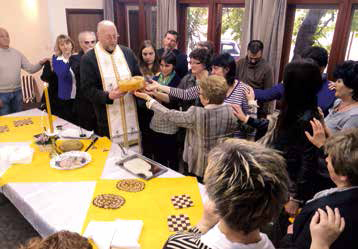
Oct 29, 2018 | Focolare Worldwide
 I am an internist and belong to the Russian-Orthodox church. As a person and believer, I was educated by my parish priest and the spirituality of Chiara Lubich. I was still very young when, through contact with the focolarine in Moscow, I felt the call to follow God in a radical way and I have been living in the focolare house of Belgrade (Serbia) for 7 years now. There is a particular and unique tradition in Serbia: the Slava feast, which the families celebrate on the day of that family’s patron saint; for the Serbs, the Slava is as ancient as Christianity itself. No Christian nation has this type of celebration, except the Orthodox Serbs. For a Serbian family the Slava comes after Easter and Christmas in terms of importance. The Orthodox-Christian missionaries who converted the Serbs to the Holy Orthodox faith, also Christianised their customs. Upon becoming Orthodox Christians, the Serbs accept the saint or saints of the day on which they are baptized. In Serbian culture, the Slava has always been a unique element throughout the history of the Serbian Orthodox people. Since the Serbs find themselves in a geographic region between the East and the West, and between different cultures, the Slava has become a feast identified with one’s own name and existence. It is celebrated by cities and even by military units also through cultural and social organisations. On that day, relatives, friends and acquaintances get together. The house is open to all. Our focolare is composed of Catholic focolarine from various countries and by me. For some time now we have felt the desire to make this beautiful tradition of the Serbian people our very own, and celebrate it together with our brothers and sisters. In the ecumenical spirit of the Focolare, our monk-friend, Fr. Djordje, helped us to choose our patron saint, and he suggested celebrating the holy “mironosice” women (the “women who went to the sepulchre with the herbs and spices”), and to whom the Orthodox Church dedicate an entire week starting from the second Sunday after Easter. So we have celebrated the Slava in the focolare for 4 years now. Many of our Orthodox friends were enthusiastic about our decision and helped us to prepare the things needed for the feast. Every year, for the Sunday of the holy women at the sepulchre, we welcome our friends of various churches, among whom are also our next-door neighbours, and some colleague, labourer or doctor. The highlight – the rite of slicing the Slava bread – is celebrated by our friend, Fr. Djordje, before the icon of the women at the sepulchre. We start with a devout prayer, accompanied by songs, and then, very moved and hand in hand, we pray according to the Slava feast tradition. Giving us the first benediction, Fr. Djordje pointed to the holy women of the sepulchre as models and protectors of the focolare, encouraging us to follow the example of the women, follow Jesus and become “like the salt that transforms society and its surroundings.” The rite is followed by the agape, with various culinary specialties in an atmosphere of joy and communion, as in a family. One of our acquaintances told us that he considered this step “a real enculturation that appreciates and makes the other’s culture one’s own: true Christianity.” Source: NU, new humanity, no. 231, p. 75.
I am an internist and belong to the Russian-Orthodox church. As a person and believer, I was educated by my parish priest and the spirituality of Chiara Lubich. I was still very young when, through contact with the focolarine in Moscow, I felt the call to follow God in a radical way and I have been living in the focolare house of Belgrade (Serbia) for 7 years now. There is a particular and unique tradition in Serbia: the Slava feast, which the families celebrate on the day of that family’s patron saint; for the Serbs, the Slava is as ancient as Christianity itself. No Christian nation has this type of celebration, except the Orthodox Serbs. For a Serbian family the Slava comes after Easter and Christmas in terms of importance. The Orthodox-Christian missionaries who converted the Serbs to the Holy Orthodox faith, also Christianised their customs. Upon becoming Orthodox Christians, the Serbs accept the saint or saints of the day on which they are baptized. In Serbian culture, the Slava has always been a unique element throughout the history of the Serbian Orthodox people. Since the Serbs find themselves in a geographic region between the East and the West, and between different cultures, the Slava has become a feast identified with one’s own name and existence. It is celebrated by cities and even by military units also through cultural and social organisations. On that day, relatives, friends and acquaintances get together. The house is open to all. Our focolare is composed of Catholic focolarine from various countries and by me. For some time now we have felt the desire to make this beautiful tradition of the Serbian people our very own, and celebrate it together with our brothers and sisters. In the ecumenical spirit of the Focolare, our monk-friend, Fr. Djordje, helped us to choose our patron saint, and he suggested celebrating the holy “mironosice” women (the “women who went to the sepulchre with the herbs and spices”), and to whom the Orthodox Church dedicate an entire week starting from the second Sunday after Easter. So we have celebrated the Slava in the focolare for 4 years now. Many of our Orthodox friends were enthusiastic about our decision and helped us to prepare the things needed for the feast. Every year, for the Sunday of the holy women at the sepulchre, we welcome our friends of various churches, among whom are also our next-door neighbours, and some colleague, labourer or doctor. The highlight – the rite of slicing the Slava bread – is celebrated by our friend, Fr. Djordje, before the icon of the women at the sepulchre. We start with a devout prayer, accompanied by songs, and then, very moved and hand in hand, we pray according to the Slava feast tradition. Giving us the first benediction, Fr. Djordje pointed to the holy women of the sepulchre as models and protectors of the focolare, encouraging us to follow the example of the women, follow Jesus and become “like the salt that transforms society and its surroundings.” The rite is followed by the agape, with various culinary specialties in an atmosphere of joy and communion, as in a family. One of our acquaintances told us that he considered this step “a real enculturation that appreciates and makes the other’s culture one’s own: true Christianity.” Source: NU, new humanity, no. 231, p. 75.
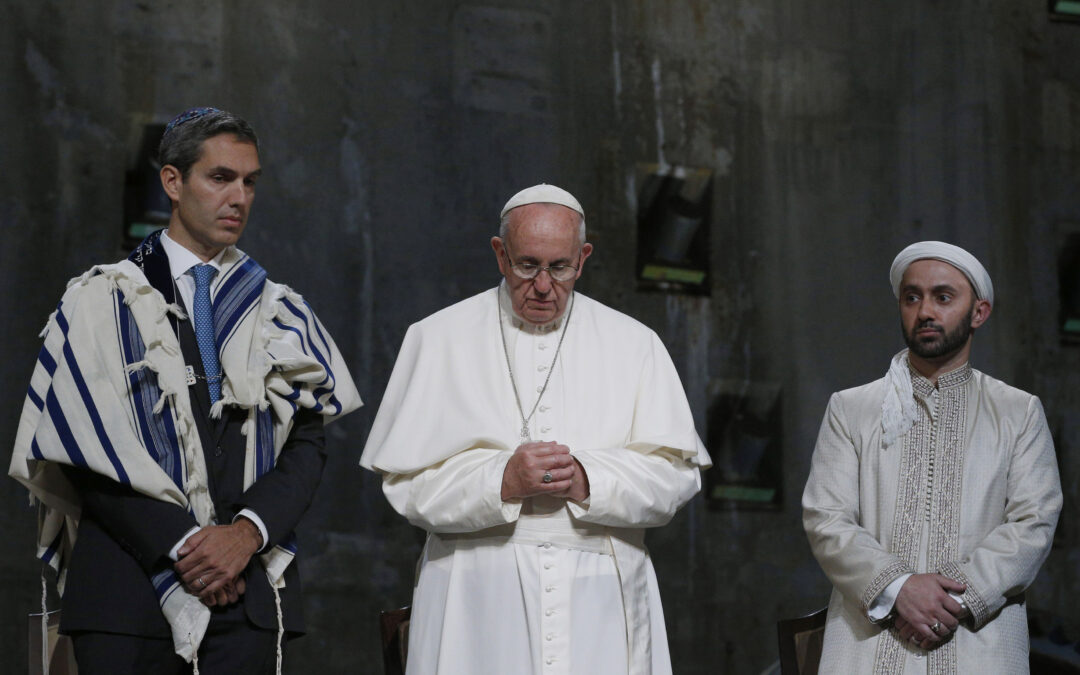
Oct 28, 2018 | Non categorizzato
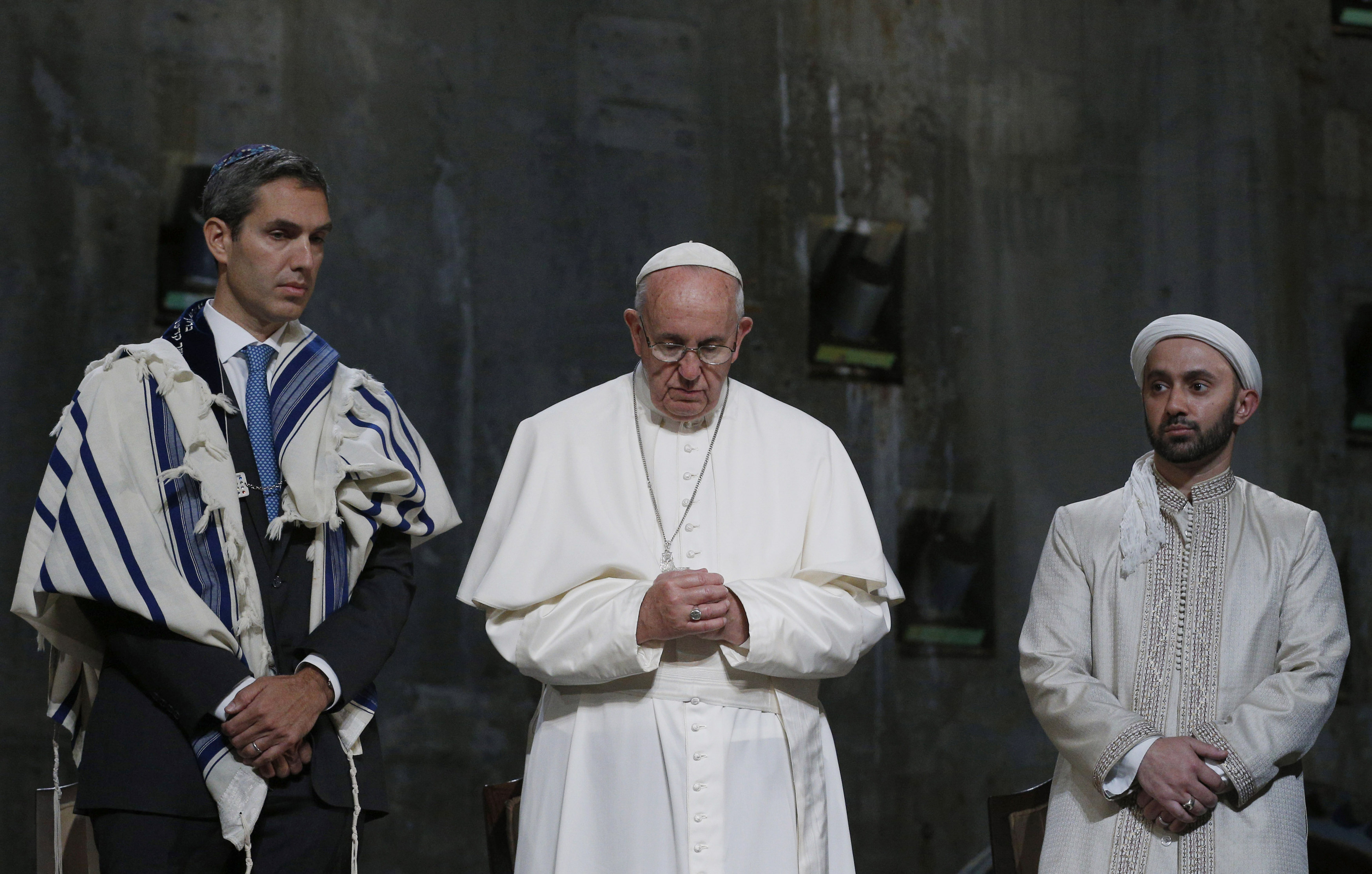 53 years have passed since, Pope Paul VI, 28 October 1965, signed the first historical “Declaration on the Relation of the Church to non-Christian religions,” known as Nostra Aetate (in our time). The Declaration affirms that “The Catholic Church rejects nothing of what is true and holy in these religions. She has a high regard for the manner of life and conduct, the precepts and doctrines, which, although differing in many ways from her own teaching, nevertheless often reflect a ray of that truth which enlightens all men.” But it also underlines that the Church “is duty bound to announce without fail that Christ is the “way, the truth and the life” (Jn 14,6), in him whom God reconciled all things to himself, men find the fullness of their religious life.” The Declaration urges all Christians “to enter with prudence and charity into discussion and collaboration with the members of other religions, while witnessing to their own faith and way of life, and acknowledge, preserve and encourage the spiritual and moral truths found among non-Christians and also their social life and culture.” Read the entire text
53 years have passed since, Pope Paul VI, 28 October 1965, signed the first historical “Declaration on the Relation of the Church to non-Christian religions,” known as Nostra Aetate (in our time). The Declaration affirms that “The Catholic Church rejects nothing of what is true and holy in these religions. She has a high regard for the manner of life and conduct, the precepts and doctrines, which, although differing in many ways from her own teaching, nevertheless often reflect a ray of that truth which enlightens all men.” But it also underlines that the Church “is duty bound to announce without fail that Christ is the “way, the truth and the life” (Jn 14,6), in him whom God reconciled all things to himself, men find the fullness of their religious life.” The Declaration urges all Christians “to enter with prudence and charity into discussion and collaboration with the members of other religions, while witnessing to their own faith and way of life, and acknowledge, preserve and encourage the spiritual and moral truths found among non-Christians and also their social life and culture.” Read the entire text
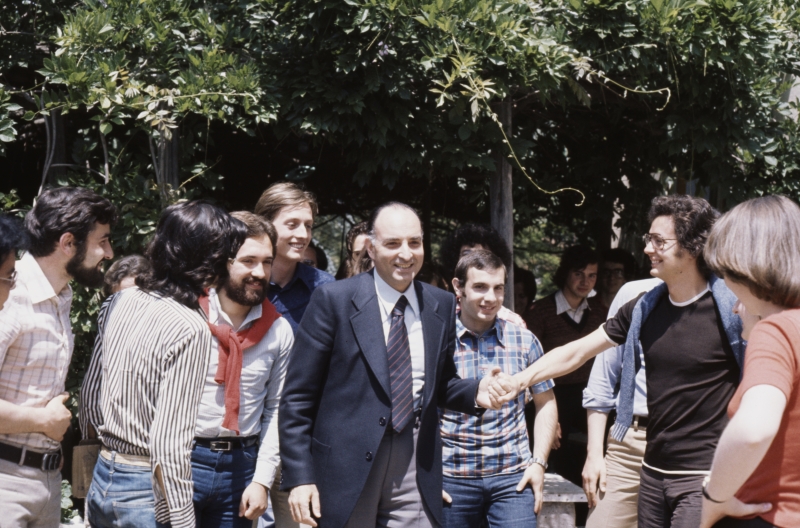
Oct 26, 2018 | Non categorizzato

Archival photo: Pasquale Foresi with the young people of the Focolare Movement.
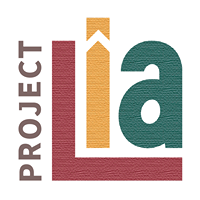
Oct 25, 2018 | Focolare Worldwide
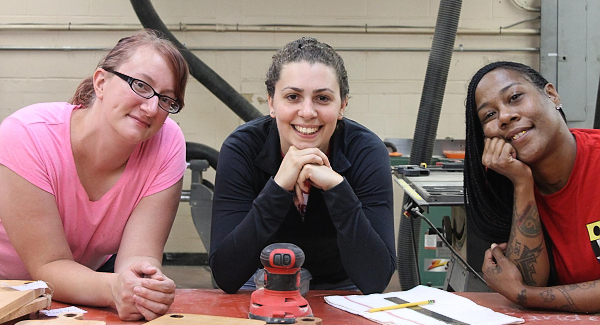 “During the summer months I attended the business programme of the network of businesses that belong to the Economy of Communion in the United States. So, in addition to the two-year course in Economics and Management that I was taking at the Sophia University Institute in the international town of Loppiano, Italy, I found myself in Indiana during the months of July and August. I only expected it to be an experience of scientific research. Instead, I found myself immersed in a series of activities, but also in the midst of a compelling personal adventure. (A reminder for the next times: How necessary it is to disarm ourselves of any expectations in order to embrace the full depth of every experience!) The internship for young people is held at Mundell & Associates Inc headquartered in Indianapolis, USA. But this year was something more: The interns could spend time and share their professional skills inside Project Lia, which is another EoC business that is developed along two tracks: social impact and environmental impact. It was really an extra bonus to be able to draw closer to this business sector as well.
“During the summer months I attended the business programme of the network of businesses that belong to the Economy of Communion in the United States. So, in addition to the two-year course in Economics and Management that I was taking at the Sophia University Institute in the international town of Loppiano, Italy, I found myself in Indiana during the months of July and August. I only expected it to be an experience of scientific research. Instead, I found myself immersed in a series of activities, but also in the midst of a compelling personal adventure. (A reminder for the next times: How necessary it is to disarm ourselves of any expectations in order to embrace the full depth of every experience!) The internship for young people is held at Mundell & Associates Inc headquartered in Indianapolis, USA. But this year was something more: The interns could spend time and share their professional skills inside Project Lia, which is another EoC business that is developed along two tracks: social impact and environmental impact. It was really an extra bonus to be able to draw closer to this business sector as well. 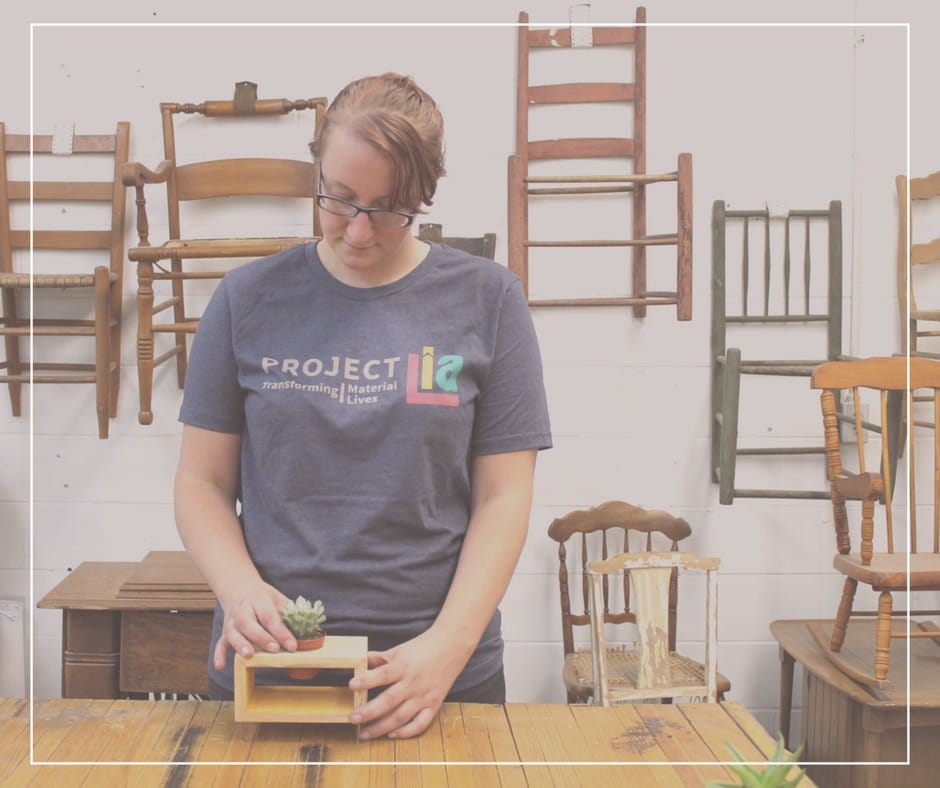 I’d like to share a couple of thoughts. First of all, I think that one of the most important things about studying, observing, practicing and promoting the EoC is the will to collaborate. In order to enter into the relational dynamic of this proposal, it is necessary to open one’s heart, mind and eyes to those small details that make each day something extraordinary: mutual encouragement and a welcoming smile, recognizing the value and the humanity of the other person, the personal encounter with people you never knew before, the ability to wonder, striving for a balance among the different aspects of life, the decision to appreciate every learning opportunity, to assimilate new information, to recognize and support the change that is taking place, to take part in the transformation of obsolete concepts. EoC is an economic proposal that is different from the others, because it is managed by a diverse group of people. It’s not the model in itself, but the people that constitute the center of all the action.
I’d like to share a couple of thoughts. First of all, I think that one of the most important things about studying, observing, practicing and promoting the EoC is the will to collaborate. In order to enter into the relational dynamic of this proposal, it is necessary to open one’s heart, mind and eyes to those small details that make each day something extraordinary: mutual encouragement and a welcoming smile, recognizing the value and the humanity of the other person, the personal encounter with people you never knew before, the ability to wonder, striving for a balance among the different aspects of life, the decision to appreciate every learning opportunity, to assimilate new information, to recognize and support the change that is taking place, to take part in the transformation of obsolete concepts. EoC is an economic proposal that is different from the others, because it is managed by a diverse group of people. It’s not the model in itself, but the people that constitute the center of all the action.  At the conclusion, when I was getting ready to leave I asked myself: How will I describe this experience? The internship was very demanding: the encounter with Project Lia, an innovative business experience, had given me so much. Among other things, working so closely with Elizabeth Wallin, who had begun the project, I saw myself in the future being able to face and overcome challenges and difficult moments. I so much appreciate the time that I had to learn her story: it permitted me to understand business, but also to enter into contact with what is the essence of a business that serves a social purpose. I saw that launching a start-up is quite an enriching process. It’s no secret that doing business is an ongoing Discovery of new things, a real battle. Watching Elizabeth, day after day, I admire her capacity to navigate in a sea of changes. Giving one’s life for a business is an activity that is born from intelligence, but also heart. To launch a project of the EoC society, you need to be able to step out of your comfort zone and encounter the others, just as they are. Patience is needed, humility and flexibility. When this path opens for me too, I’ll be a little closer to what I really am.” Source: Sophia University Institute sophiauniversity.org See also: Project Lia: Transforming Lives
At the conclusion, when I was getting ready to leave I asked myself: How will I describe this experience? The internship was very demanding: the encounter with Project Lia, an innovative business experience, had given me so much. Among other things, working so closely with Elizabeth Wallin, who had begun the project, I saw myself in the future being able to face and overcome challenges and difficult moments. I so much appreciate the time that I had to learn her story: it permitted me to understand business, but also to enter into contact with what is the essence of a business that serves a social purpose. I saw that launching a start-up is quite an enriching process. It’s no secret that doing business is an ongoing Discovery of new things, a real battle. Watching Elizabeth, day after day, I admire her capacity to navigate in a sea of changes. Giving one’s life for a business is an activity that is born from intelligence, but also heart. To launch a project of the EoC society, you need to be able to step out of your comfort zone and encounter the others, just as they are. Patience is needed, humility and flexibility. When this path opens for me too, I’ll be a little closer to what I really am.” Source: Sophia University Institute sophiauniversity.org See also: Project Lia: Transforming Lives
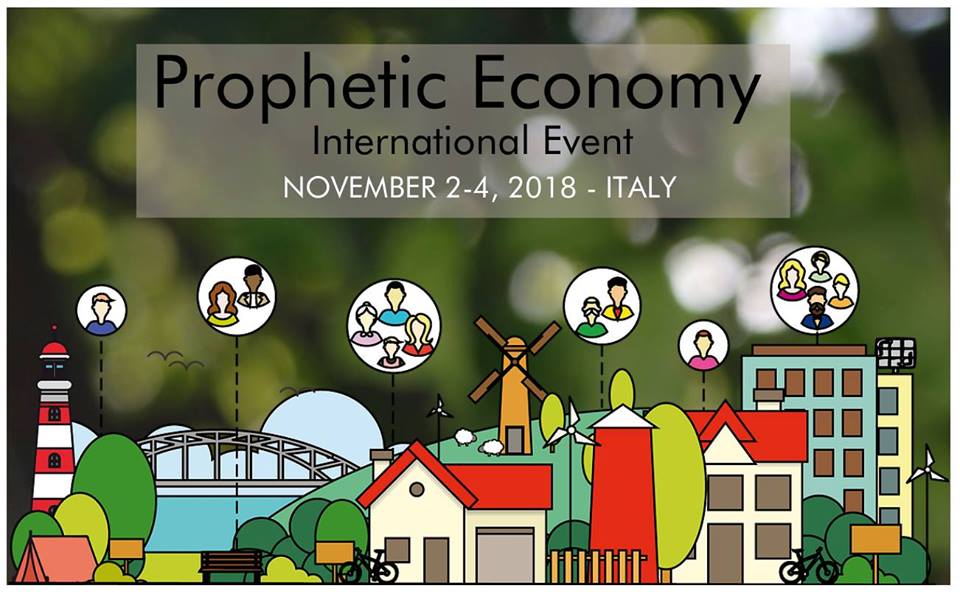
Oct 24, 2018 | Focolare Worldwide
 On November 2-4 the International Prophetic Economy event will be held in Castel Gandolfo, Italy. It is being organized by several international movements and institutions whose goal is to create new paths of collaboration among change-makers (individuals as well as private and public organizations) from around the globe. These are change-makers who utilise sustainable solutions for social and environmental problems, work and become engaged in new creative forms of “prophetic” economy that favor the human person, especially the most needy. “Our world,” they claim, “faces an ecological and social crisis. Climate change and growing inequality are nourished by unjust political structures and short-term aid, along with obsolete policies and procedures. Many people around the world believe passionately in human development and in sustainable development that can change the rules and require justice. It’s time to put ourselves together and be more than the sum of our parts. The event was preceded by an award contest, the Prophetic Practices Award 2018, which 135 change-makers held in 35 countries. The experiences of the finalists, chosen by an international jury of experts (Vandana Shiva, Jeff Sachs, Cristina Calvo and Stefano Zamagni), will be presented live during the event in November. See: Prophetic Economy website
On November 2-4 the International Prophetic Economy event will be held in Castel Gandolfo, Italy. It is being organized by several international movements and institutions whose goal is to create new paths of collaboration among change-makers (individuals as well as private and public organizations) from around the globe. These are change-makers who utilise sustainable solutions for social and environmental problems, work and become engaged in new creative forms of “prophetic” economy that favor the human person, especially the most needy. “Our world,” they claim, “faces an ecological and social crisis. Climate change and growing inequality are nourished by unjust political structures and short-term aid, along with obsolete policies and procedures. Many people around the world believe passionately in human development and in sustainable development that can change the rules and require justice. It’s time to put ourselves together and be more than the sum of our parts. The event was preceded by an award contest, the Prophetic Practices Award 2018, which 135 change-makers held in 35 countries. The experiences of the finalists, chosen by an international jury of experts (Vandana Shiva, Jeff Sachs, Cristina Calvo and Stefano Zamagni), will be presented live during the event in November. See: Prophetic Economy website
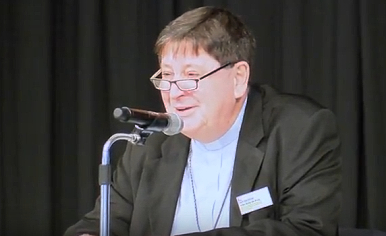
Oct 24, 2018 | Focolare Worldwide
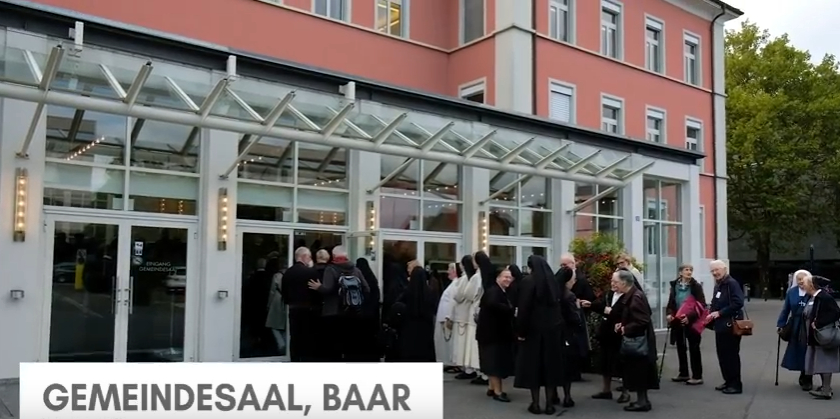 In the heart of Europe with its 7.8 million inhabitants within a territory of 41 thousand km, Switzerland is a small country with a broad variety of languages, cultures and religions which has also been held up as a model of successful integration. The spirituality of unity, which is particularly congenial to a social fabric oriented towards relationships and acceptance spread rapidly in this land ever since 1960 and caught on quickly. Many successive spiritual intutions regarding the development of Focolare spirituality are linked to the summer holidays Chiara Lubich spent in the Swiss valleys. A centre of formation has been operating in Baar since 1975. It is open to all and has become, over time, the heart of the Focolare town of “Eckstein” (cornerstone) where several small businesses operate. The centre offers opportunities for contact and encounter not only among Catholic and Reformed Christians.
In the heart of Europe with its 7.8 million inhabitants within a territory of 41 thousand km, Switzerland is a small country with a broad variety of languages, cultures and religions which has also been held up as a model of successful integration. The spirituality of unity, which is particularly congenial to a social fabric oriented towards relationships and acceptance spread rapidly in this land ever since 1960 and caught on quickly. Many successive spiritual intutions regarding the development of Focolare spirituality are linked to the summer holidays Chiara Lubich spent in the Swiss valleys. A centre of formation has been operating in Baar since 1975. It is open to all and has become, over time, the heart of the Focolare town of “Eckstein” (cornerstone) where several small businesses operate. The centre offers opportunities for contact and encounter not only among Catholic and Reformed Christians. 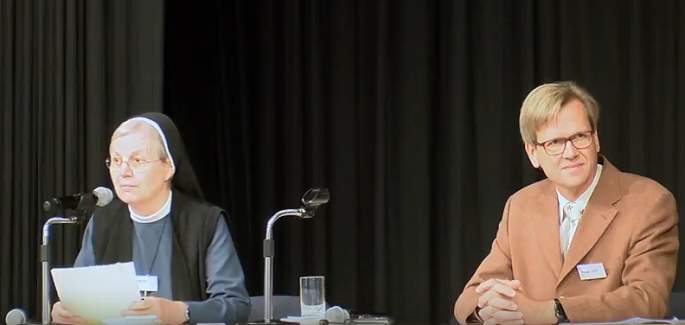 At the end of September a meeting was held for around 400 men and women Religious, first at City Hall which is not far from the Centre. The group was restricted to superiors and persons in positions of responsibility, with the behind the scenes assistance of Focolare members. The participants were members of eighty communities, including a dozen from the Reformed Church and an Orthodox community, as well as members of Secular Institutes, Movements and Ecclesial Families.
At the end of September a meeting was held for around 400 men and women Religious, first at City Hall which is not far from the Centre. The group was restricted to superiors and persons in positions of responsibility, with the behind the scenes assistance of Focolare members. The participants were members of eighty communities, including a dozen from the Reformed Church and an Orthodox community, as well as members of Secular Institutes, Movements and Ecclesial Families.  “In today’s world we have to help each other to stand together, to not look at the barriers between us, not our differences that must nevertheless be preserved. But we have to do in such a way that all our differences shine in one grand experience, in the footsteps of Christ and of our founders.” These were the words of Cardinal Joâo Braz de Aviz, who attended the meeting. In one interview, the Prefect of the Congregation for the Consecrated Life explained: “All the structures that form the Church – Religious, Hermits, Monks, Nuns, Brothers, Sisters, Secular Institutes – all of them are seeking a common life. In today’s culture everything has drawn closer together.” “At this moment in time,” he explained, “we are in need of a path that we can take together and, even we who belong to Orders, Congregations and Consecrated Life, need a tool, a way of life that draws us together in all ways. This is not the path we took at first, that of an individual spirituality, that is preserved. We need to move on to ‘looking’ together, to looking at the other with the same attentiveness with which we look at ourselves. All of this we are just beginning to learn, including us cardinals…” He concluded: “I wish that all of us, in this moment, would sum up all of our beauties and form one grand unity, remembering what Pope Francis says: “Unity is not built [by] destroying, but harmonizing the diversity.” It’s a path that at times causes fatigue, because we have to learn to go out towards the others, “the first move we have to make is to go towards the other,” as the Pope points out. If we don’t go out of ourselves, we remain at the centre. This is beginning here in Switzerland, with simplicity, as if we were all at the School of Mary.”
“In today’s world we have to help each other to stand together, to not look at the barriers between us, not our differences that must nevertheless be preserved. But we have to do in such a way that all our differences shine in one grand experience, in the footsteps of Christ and of our founders.” These were the words of Cardinal Joâo Braz de Aviz, who attended the meeting. In one interview, the Prefect of the Congregation for the Consecrated Life explained: “All the structures that form the Church – Religious, Hermits, Monks, Nuns, Brothers, Sisters, Secular Institutes – all of them are seeking a common life. In today’s culture everything has drawn closer together.” “At this moment in time,” he explained, “we are in need of a path that we can take together and, even we who belong to Orders, Congregations and Consecrated Life, need a tool, a way of life that draws us together in all ways. This is not the path we took at first, that of an individual spirituality, that is preserved. We need to move on to ‘looking’ together, to looking at the other with the same attentiveness with which we look at ourselves. All of this we are just beginning to learn, including us cardinals…” He concluded: “I wish that all of us, in this moment, would sum up all of our beauties and form one grand unity, remembering what Pope Francis says: “Unity is not built [by] destroying, but harmonizing the diversity.” It’s a path that at times causes fatigue, because we have to learn to go out towards the others, “the first move we have to make is to go towards the other,” as the Pope points out. If we don’t go out of ourselves, we remain at the centre. This is beginning here in Switzerland, with simplicity, as if we were all at the School of Mary.”



 It’s called “TST” (tempi senza tensioni, “Time Without Tensions”), a program aimed at balancing work and family life. It was produced by the Il Sentiero di Arianna social cooperative (“Arianna’s way”), which is part of the Economy of Communion, and received first prize in the fourth edition of Family Friendly Businesses that is put on by a forum of family associations in Lazio, Italy. The cooperative, which is part of the Consorzio Tassano Servizi Territoriali network, primarily works in the field of home assistance, education, school services and career support. The TST program produces a series of specific services for employees (dispute resolution, family help, counseling services, working remotely, telecommuting, flexible banking hours, informative actions for management, being a Jack of all trades, and pathways that help employees returning to work after a period of reconciliation). These have shown themselves to be highly effective in creating a positive workplace culture that is based on authentic relationships of collaboration and cooperation. Started in 1996 by nine young women, who for a year pooled the resources that they had earned and reinvested them in training and development, today Il Sentiero di Arianna counts more than 130 members, 85% of whom are women. The tightly knit initial group and the pioneers of the local coop, inspired by the values of the Economy of Communion project that
It’s called “TST” (tempi senza tensioni, “Time Without Tensions”), a program aimed at balancing work and family life. It was produced by the Il Sentiero di Arianna social cooperative (“Arianna’s way”), which is part of the Economy of Communion, and received first prize in the fourth edition of Family Friendly Businesses that is put on by a forum of family associations in Lazio, Italy. The cooperative, which is part of the Consorzio Tassano Servizi Territoriali network, primarily works in the field of home assistance, education, school services and career support. The TST program produces a series of specific services for employees (dispute resolution, family help, counseling services, working remotely, telecommuting, flexible banking hours, informative actions for management, being a Jack of all trades, and pathways that help employees returning to work after a period of reconciliation). These have shown themselves to be highly effective in creating a positive workplace culture that is based on authentic relationships of collaboration and cooperation. Started in 1996 by nine young women, who for a year pooled the resources that they had earned and reinvested them in training and development, today Il Sentiero di Arianna counts more than 130 members, 85% of whom are women. The tightly knit initial group and the pioneers of the local coop, inspired by the values of the Economy of Communion project that 
 “It is often to the youngest that the Lord reveals better solutions.” These are words from Saint Benedict in his “Rule.” These were also the words chosen by Pope Francis when he announced the
“It is often to the youngest that the Lord reveals better solutions.” These are words from Saint Benedict in his “Rule.” These were also the words chosen by Pope Francis when he announced the 

 53 years have passed since, Pope Paul VI, 28 October 1965, signed the first historical “Declaration on the Relation of the Church to non-Christian religions,” known as Nostra Aetate (in our time). The Declaration affirms that “The Catholic Church rejects nothing of what is true and holy in these religions. She has a high regard for the manner of life and conduct, the precepts and doctrines, which, although differing in many ways from her own teaching, nevertheless often reflect a ray of that truth which enlightens all men.” But it also underlines that the Church “is duty bound to announce without fail that Christ is the “way, the truth and the life” (Jn 14,6), in him whom God reconciled all things to himself, men find the fullness of their religious life.” The Declaration urges all Christians “to enter with prudence and charity into discussion and collaboration with the members of other religions, while witnessing to their own faith and way of life, and acknowledge, preserve and encourage the spiritual and moral truths found among non-Christians and also their social life and culture.”
53 years have passed since, Pope Paul VI, 28 October 1965, signed the first historical “Declaration on the Relation of the Church to non-Christian religions,” known as Nostra Aetate (in our time). The Declaration affirms that “The Catholic Church rejects nothing of what is true and holy in these religions. She has a high regard for the manner of life and conduct, the precepts and doctrines, which, although differing in many ways from her own teaching, nevertheless often reflect a ray of that truth which enlightens all men.” But it also underlines that the Church “is duty bound to announce without fail that Christ is the “way, the truth and the life” (Jn 14,6), in him whom God reconciled all things to himself, men find the fullness of their religious life.” The Declaration urges all Christians “to enter with prudence and charity into discussion and collaboration with the members of other religions, while witnessing to their own faith and way of life, and acknowledge, preserve and encourage the spiritual and moral truths found among non-Christians and also their social life and culture.” 


 I’d like to share a couple of thoughts. First of all, I think that one of the most important things about studying, observing, practicing and promoting the EoC is the will to collaborate. In order to enter into the relational dynamic of this proposal, it is necessary to open one’s heart, mind and eyes to those small details that make each day something extraordinary: mutual encouragement and a welcoming smile, recognizing the value and the humanity of the other person, the personal encounter with people you never knew before, the ability to wonder, striving for a balance among the different aspects of life, the decision to appreciate every learning opportunity, to assimilate new information, to recognize and support the change that is taking place, to take part in the transformation of obsolete concepts. EoC is an economic proposal that is different from the others, because it is managed by a diverse group of people. It’s not the model in itself, but the people that constitute the center of all the action.
I’d like to share a couple of thoughts. First of all, I think that one of the most important things about studying, observing, practicing and promoting the EoC is the will to collaborate. In order to enter into the relational dynamic of this proposal, it is necessary to open one’s heart, mind and eyes to those small details that make each day something extraordinary: mutual encouragement and a welcoming smile, recognizing the value and the humanity of the other person, the personal encounter with people you never knew before, the ability to wonder, striving for a balance among the different aspects of life, the decision to appreciate every learning opportunity, to assimilate new information, to recognize and support the change that is taking place, to take part in the transformation of obsolete concepts. EoC is an economic proposal that is different from the others, because it is managed by a diverse group of people. It’s not the model in itself, but the people that constitute the center of all the action. 

 In the heart of Europe with its 7.8 million inhabitants within a territory of 41 thousand km,
In the heart of Europe with its 7.8 million inhabitants within a territory of 41 thousand km,  At the end of September a meeting was held for around 400 men and women Religious, first at City Hall which is not far from the Centre. The group was restricted to superiors and persons in positions of responsibility, with the behind the scenes assistance of Focolare members. The participants were members of eighty communities, including a dozen from the Reformed Church and an Orthodox community, as well as members of Secular Institutes, Movements and Ecclesial Families.
At the end of September a meeting was held for around 400 men and women Religious, first at City Hall which is not far from the Centre. The group was restricted to superiors and persons in positions of responsibility, with the behind the scenes assistance of Focolare members. The participants were members of eighty communities, including a dozen from the Reformed Church and an Orthodox community, as well as members of Secular Institutes, Movements and Ecclesial Families.